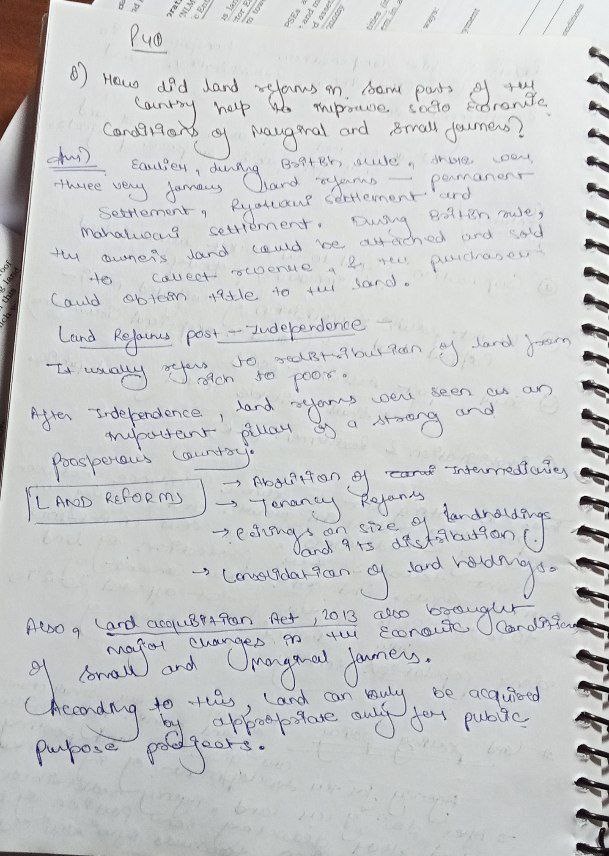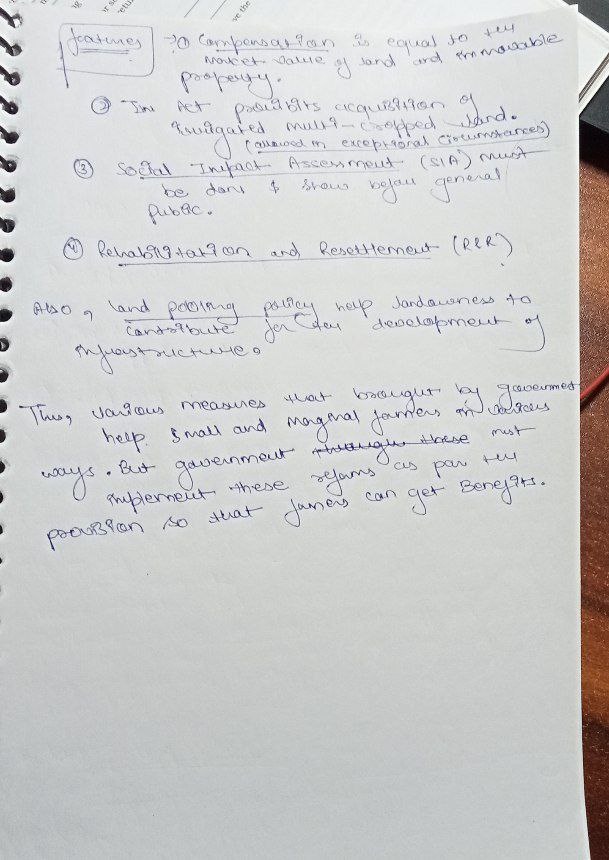Land reform refers to efforts to reform ownership, operation, leasing, sales, and property rights of land in India. Post Independent India has seen movements like Bhoodan and Gramdan which were persuasive in nature. Apart from that State sponsored initiatives like Operation Barga tried towards land reforms.
How Land Reform improved socio-economic conditions of marginal and small farmers:
- Abolition of Intermediaries: It included abolition of Zamindari, Ryotwari and Mahalwari systems checking the debt trap and dispossession of land of small farmers. It further led to emergence of middle class of peasants with strong political voice.
- Tenancy Reform: It ensured Rent Regulation, Security of land tenure and conferment of ownership rights on tenants. This helped in enhancing food security and investment in irrigation seeds and fertilizers. (e.g. Operation Barga benefited 14 lakh share croppers in West Bengal).
- Ceiling on Landholdings: Ceiling laws ensured redistribution of land from big landlords to landless laborers ensuring land ownership, access to credit, food security etc.
- Consolidation of Holdings: This helped in pooling of village lands followed by distribution blocks (chaks) ensuring higher input efficiency, usage of modern implements and generating relatively higher income.
- Cooperative Farming: Here farmers pool their resources and distribute the income as per their share. This reduced input cost, allowed scaling of cultivation and access to large credit while minimizing risk in case of crop failure (Kudumbashree model in Kerala)
- Land Records: The updation and now the Digitization of Land Records helps in reducing litigation, security for land owner in case of opting for tenancy, better credit availability to small farmers and better policy making for agriculture. (e.g. Digital India Land Records Modernization Programme (DILRMP)).
However, certain challenges remain with Land reforms:
- Under Land Ceiling, Benami transaction ensured control of landlords. Also, the plantation gardens, religious and charitable institutions were exempted
- Land consolidation has been
i. a lengthy and cumbersome process.
ii. Additionally, Farmers are emotionally attached to their ancestral land.
iii. Led to large scale litigation
iv.The inheritance laws led to further division and fragmentation
Thus, Land Reforms have been a mixed experience with right direction but ineffective implementation. With land availability at 0.12 per-capita, India should now move towards second generation of land reforms focused on digitization and financial inclusion and ownership by women and marginalized communities.








